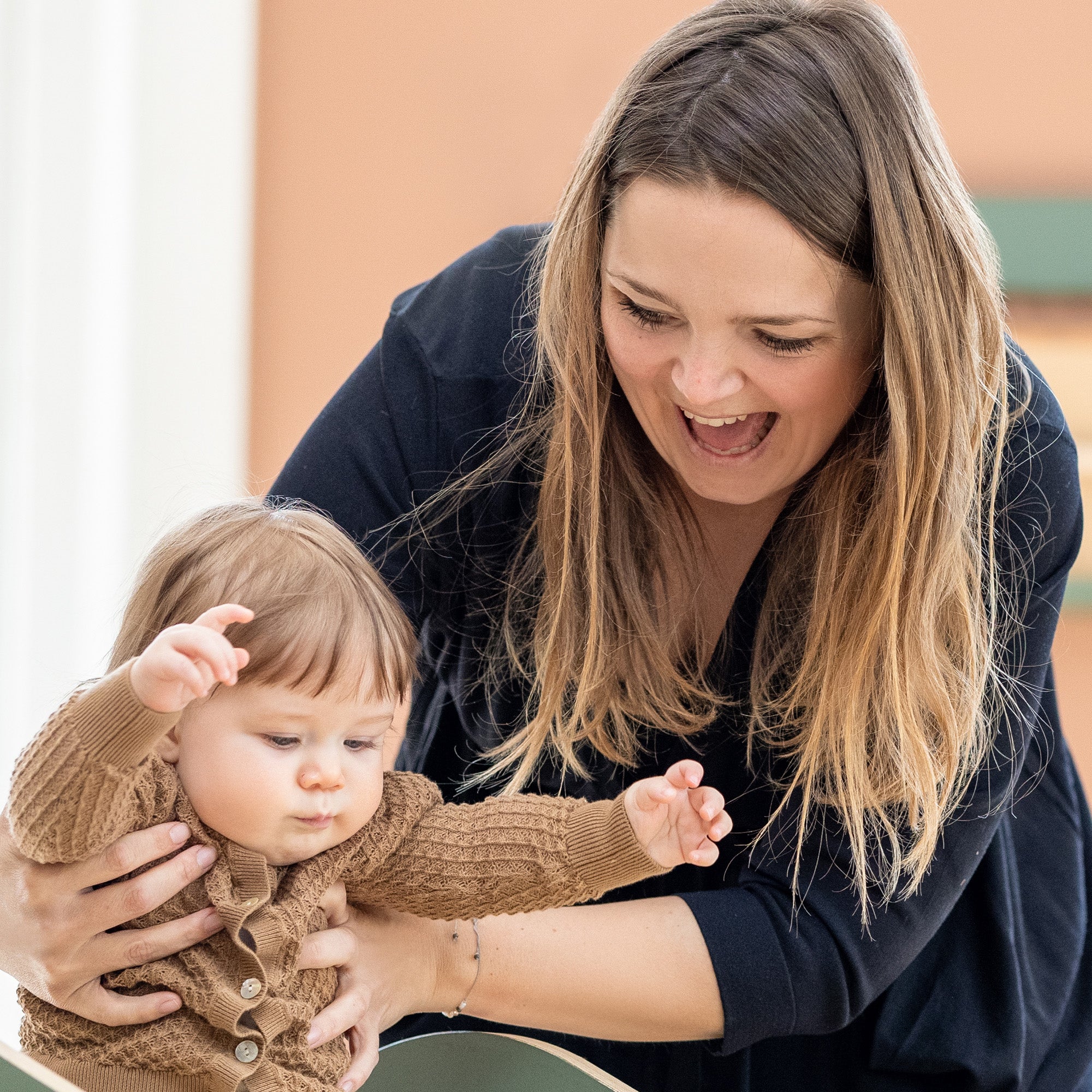If there’s one thing you can be absolutely certain of, as a parent, it’s that life with kids is full of uncertainties. Questions like “when can I expect my baby to crawl?” and “why can’t my baby walk yet?” can quickly start to pile up in your head. See what our Danish expert in babies’ motor development says about crawling and walking and get her exercises for encouraging babies’ first independent steps.
Highlights:
- Trust in your baby – all children develop at their own pace and in their own way.
-
Prepare your baby for their first independent steps by exercising especially their:
- Sense of balance
- Lower body muscles
- Coordination between muscles and joints
- Parachute reflex (the reflex that prevents falls)
-
Help your baby walk with these fun exercises:
- Ferris Wheel: stimulates your baby’s balance, core strength, muscle/joint coordination.
- Baby Rodeo: exercises your baby’s balance, parachute reflex, back and core muscles.
- Walking the Line: trains your child’s balance, parachute reflex, lower body muscles.
All Children Develop at Their Own Pace
”All children develop at their own pace and in their own way. Some babies get around by shuffling on their bum, and some babies surprise their parents by walking before they learn to crawl. So, instead of focusing on the timing aspect, the best thing you can do is trust in yourself and your child,” says expert in babies’ motor development, Mette Vainer Wegloop.
Still, she encourages parents to plan a lot of physical play time to support their babies’ development: “Tumbling, playing around, and engaging in physical exercises make happy and well-functioning kids. You can further your child’s motor development by activating specific movements, muscles, and senses. To walk, for example, your baby must build a strong sense of balance, strengthen their lower body muscles, and work on their parachute reflex, which is the reflex causing us to extend our arms to break a fall.”
Below you will find Mette Vainer Wegloop's three exercises specifically intended to encourage babies’ first steps.
1. Ferris Wheel
Encourages: your baby’s sense of balance, core muscles strengths, and coordination between your baby’s muscles and joints.
What you need: A soft Play Mattress on the floor.
How:
- Sit on the mattress with your feet on the ground and your knees slightly bent.
- Place your baby so your baby’s bottom is resting on top of your feet, and your baby’s back is resting against your shins.
- Take a firm hold on your baby’s hips and swing yourself backwards while lifting your baby over your head.
- With your hands, let your baby rotate half a turn, so your little one ends up standing on their own two feet right above your head.
2. Baby Rodeo
Encourages: your baby’s sense of balance, reflex to prevent falls, muscle and joint coordination, hand-eye coordination, and the muscles in your baby’s neck, back, and core.
What you need: a large, quilted blanket, rolled up so you can sit on it, plus some eye-catching toys that won’t easily roll away.
How:
- Place the rolled-up blanket on the floor with yourself on top.
- Have your baby sit on the rolled-up blanket as well, turning your baby’s back to your front and with your baby’s legs spread out on both sides.
- Support your child’s hips and place a toy on either side of the rolled-up blanket. When your baby reaches for a toy, let the blanket give way to the movement – this way you support your baby’s sense of balance and reflex to avoid falling over.
Try also: as your baby matures, ease the hold around your baby’s hips. One day, your child will be able to sit and get on and off without you helping. You can also challenge your baby by placing toys farther away.
3. Walking the Line
Encourages: your baby’s sense of balance, reflex to prevent falls, as well as your baby’s lower body muscles.
What you need: a stack of heavy books and a board for your baby to practice walking on (approx. length = 2 m, width = 20 cm).
How:
- Make two stacks of books and place the board on top.
- Help your child get on the board and let them find their balance.
- You can hold your baby’s hands for support while they walk down the board, perhaps jumping off at the end.
- Challenge your little one by removing a stack of books and practice walking both uphill and downhill.

